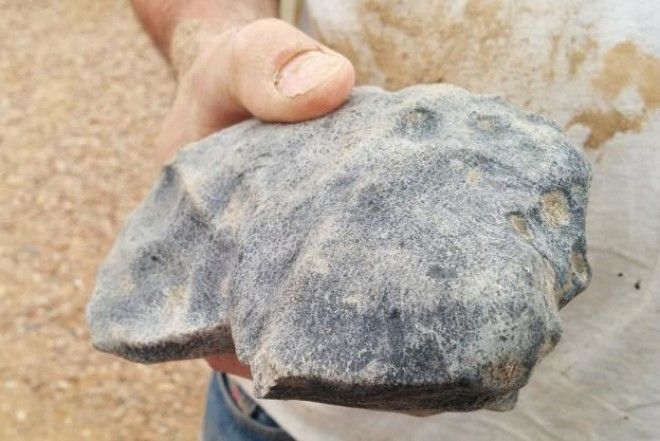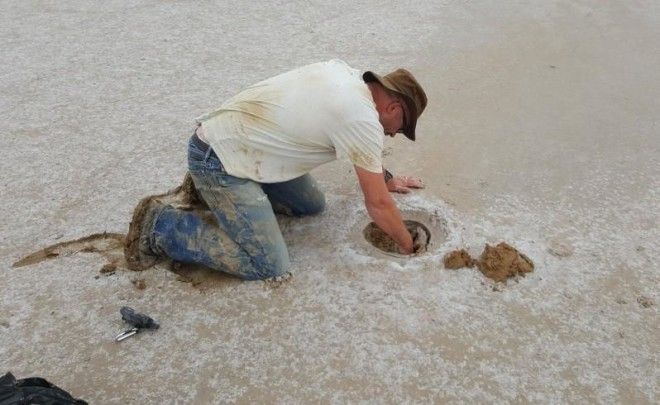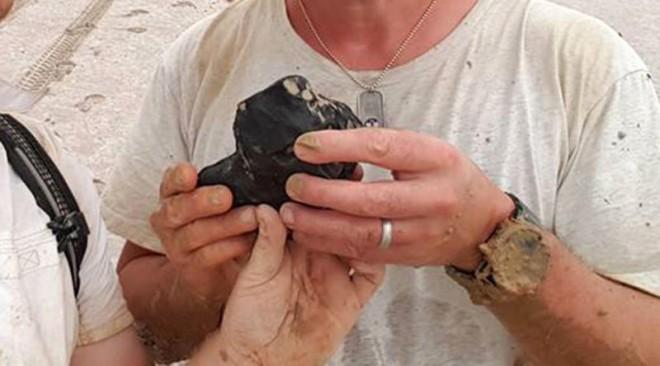
Despite its old age, the meteorite has just arrived on Earthly soil. The meteorite was seen by locals in the Australian skies two days after Christmas, on December 27, 2015, between the districts of Maree and William Creek, in the south. Besides human witnesses, a large tool was crucial: DFN has a system with 32 cameras stationed across the Australian outback that records the night skies. The captured images served to map the path to the stone.

It took three days to find the meteorite. During that time, researchers worked on image analysis, triangulation and dynamic calculations to estimate the area where the debris could have landed, in Kati Thanda-Lake Eyre. To help in the searches, also they used a remotely controlled drone and an aerial spotter. The meteorite was buried in 42 cm of mud and had to be dug out. They were able to do it just in time though, just a few hours before heavy rains hit the region, which would’ve wiped out any sign of the fall in the site, making it nearly impossible to retrieve it. The process is shown in a short video produced by the university.

“This meteorite is of special significance as the camera observations used to calculate the fall positions have also enabled the solar system orbit of the meteorite to be calculated, giving important contextual information for future study,” said team leader and planetary geologist, Professor Phil Bland. “It demonstrates beyond doubt that this giant machine that we’ve built really works. We’ve got a lot more rocks on the ground. This recovery will be the first of many – and every one of those meteorites will give us a unique window into the formation of the Solar System.”In an interview with Australia’s ABC News, he said he believed that the meteorite ‘came to us from beyond the orbit of Mars, so in between Mars and Jupiter.’

